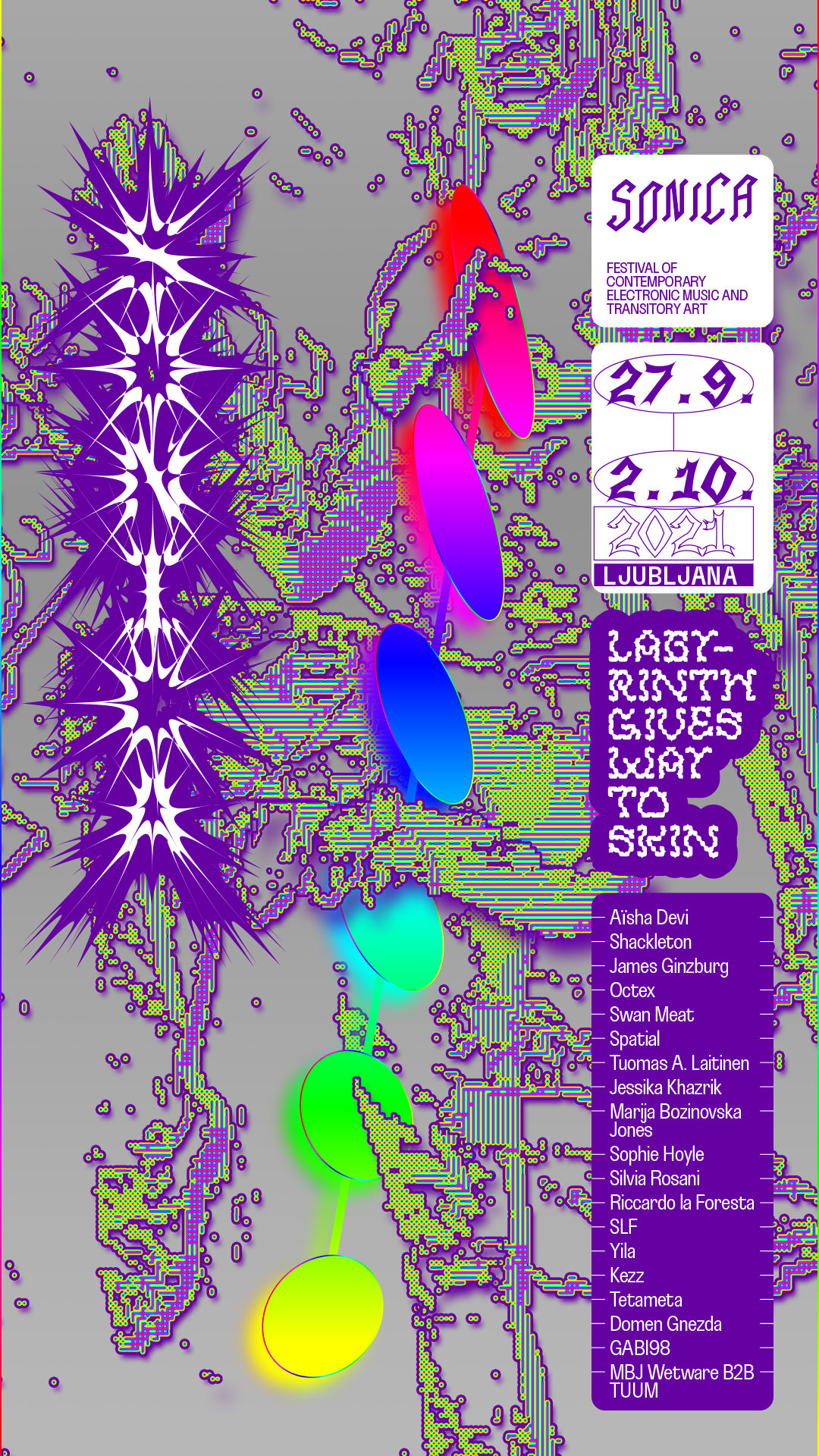OFLUXO
SONICA 2021—
Labyrinth Gives Way To Skin
SONICA is an attempt to transform a classical exhibition space into a field of events, performances, workshops, and lectures. It is a temporary laboratory established on the crossing of visual art, media and sound art and research, consisting of production and research residencies, exhibitions, performances, and public interventions, with a special focus on the intersections of music, sound and other art forms. In the past, SONICA has presented artists like Tim Hecker, Rashad Becker, Emptyset, Marina Rosenfeld, Ryoichi Kurokawa, Plaid, Byetone, Transforma, Herman Kolgen, Zimoun, SND, Nik Nowak, Nonotak, and many others.
“Labyrinth gives way to skin”, Sonica’s 2021 theme, taken from the title of a composition by Maryanne Amacher for Merce Cunningham Dance Company, serves as a launching point for an exploration of the invisible forces surrounding and emanating from our bodies in relation to our environment, one another, and the multitudinous entities that comprise ourselves. From the subtle bodies, a non-dualist Eastern mystical and medical concept of the holism of mind/body dynamics and energy flows, we extend our presence to notions of the social, collective, and cyborgian bodies, opening the possibility that our bodies are not only our own and conception of the festival as a body in itself; a body which is stirred and reconfigured by sound.
Amacher’s sound work was amongst the first to discover the ear’s ability to produce sympathetic frequencies as an otoacoustic phenomena and actively explore the relationship of the body to space, whether as a direct acoustic experience, activating whole buildings with immersive, resonant sound installations, or metaphorically through quantum physics, genetics, cybernetics and latest technological developments in distributed communication systems connecting distant bodies.
In her “Notes on Musics for the Merce Cunningham Dance Company” with regards to her compositions for Cunningham’s EVENTS program at the Roundabout Theater on December 3,1975 (p.181-3 of Maryanne Amacher: Selected Writings and Interviews), Amacher writes:
At about 15c / s the labyrinth gives way to skin as the chief organ of vibratory sensibility for the human body. In ‘hearing’, or receiving sound, knowing, remembering, and recognizing it, an amnesia, probably genetic, seems to let ear predominate … [The work aims at] finding ways of letting hearing open channels to what was previously considered subliminal, and letting these impressions surface; detecting subjectively, degrees of movement within self; extracting patterns which appear to find correspondence with biological levels.
From a more cryptically poetic equation in her personal notes, she expounds further:
Tone-of-place, ‘experienced’, ‘heard’, through skin, detected by unnamed sensibilities, an impression carried through skin even when not in the physical place–having been there a long time–continues–is carried in self.
Amacher hints at an experience at the limits or beyond physiological human perception and comprehensible explanation; one which embeds itself in the psyche and endures, fundamentally altering the body/mind which serves as its sounding board. The material of the body, and spirit emanating from it, become the vibratory substance and site of an eternal resonance; not only do the ears produce an “aftersound” phantom tone within the head, but the whole dermic expanse becomes a speaker with which one can experience the silently transformative “inner sound”. In ancient Indian metaphysical language this is called anhata, as differentiated from ahata (sound and music), and is based upon the theory that the fundamental structure of the cosmos originates from vibration, nāda, the primordial sound. Within the system of nāda yoga, the silent vibrations of self open the body’s energetic centers, chakras, expanding awareness and enabling a greater unity with both the outer and inner cosmos.
The body is thus not something to be transcended but rather the location of potential transcendence and necessary vessel for the process of becoming. In the Tantric offshoot of Buddhism and Hinduism, originating in India and spreading its tentacles into various Tibetan, Chinese, and Japanese traditions including Bön, Taoism, and Shintoism, one harnesses the body as a site of alchemical transmutation through prolonged meditative engagement with the entire sensual and perceptual organism. Kaustubh Das Dehlvi explains in contemporary scientific terms,“Tantra is a discipline wherein the chemical and neurological foundations of experience themselves are treated as the objects of experience and manipulated in order to achieve ultimate liberation. This ultimate liberation is a state of experience which is unconditioned by the five sense organs, mind, perspective in space-time etc.” He continues “The yogis and tantrics followed this process to create maps of the human nervous system. Following the nervous circuits, they were able to internally master the way nerve-electricity flows within the neural networks. This allowed them to experience the phenomena of consciousness in all its levels. It allowed them to discover the point where the ego-mind dissolves into universal consciousness. The discipline of tantra creates new neural connections with the express purpose of resolving the mind-body duality.”
In order to achieve this ultimate dissolution such maps however exposed layers of the human nervous system otherwise invisible and undetectable; this energetic network of exodermic and endodermic channels (nadis or meridians) and convergence points (chakras or acupuncture points) which convey subtle breath (prana, vayu, ch’i, ki, lung) is known as the “subtle body”, as translated by the Theosophists from Sanskrit (sūkṣma śarīra), first appearing in the Upanishads, and finding its parallels in Sufism, Hermeticism, and Khaibt in Ancient Egypt. It is believed that this energetic network is what determines one’s physical form and once mastered through breathing techniques can give extraordinary powers (siddhis) to manipulate this physical realm as well as ultimately being freed from it. In some systems, our bodies are conceived to even incorporate a dimension existing simultaneously in the astral plane, which can untether, wander, and possess bodies in our material world before returning to their original host body.
These body maps often incorporate mandalas with Hindu deities within lotus flowers located at energetic points and even scenes with humans and animals as if tattooed; in Chinese Taoist alchemical illustrations such as the Neijing Tu, the body is inversely transformed to a topographical form including mountains, rivers, paths, forests, and stars. Nineteenth and twentieth century Western occultists such as The Hermetic Order of The Golden Dawn, transposed diagrams such as the Kabbalistic Tree of Life on to the concept of the subtle body, which they called “The Sphere of Sensation”, envisioning the body as a microcosmic ‘magical mirror of the universe’. Renowned Kabbalist Israel Regardie explains that the concept of the Nephesch is “the subtle body of refined Astral Light upon which, as on an invisible pattern, the physical body is extended” hence Aleister Crowley renaming it the Body of Light.
Through the lense of the current Posthumanities and New Materialism philosophical wave of scholarship which questions humankind’s supposed separation from and mastery of “Nature”, one can draw parallels to these mystical diagrams and their depiction of the “outside” environment folding in on (or out from, depending on your point of view) the body, a microcosmic map of universal energy encased in a porous shell: as above, so below. As Stacy Alaimo writes in ‘Bodily Nature’:
Imagining human corporeality [and I would argue, all corporeality] as trans-corporeality, in which the human is always intermeshed with the more-than-human world, underlines the extent to which the substance of the human is ultimately inseparable from “the environment.” It makes it difficult to pose nature as mere background, as Val Plumwood would put it, for the exploits of the human since “nature” is always as close as one’s own skin– perhaps even closer. Indeed, thinking across bodies may catalyze the recognition that the environment, which is too often imagined as inert, empty space or as a resource for human use, is, in fact, a world of fleshy beings with their own needs, claims, and actions. By emphasizing the movement across bodies, trans-corporeality reveals the interchanges and interconnections between various bodily natures. But by underscoring that trans indicates movement across different sites, trans-corporeality also opens up a mobile space that acknowledges the often unpredictable and unwanted actions of human bodies, nonhuman creatures, ecological systems, chemical agents, and other actors.
Similarly this extends to the separation between man and the technology we innovate, a cyborgian extension of our bodies into space as well as inwardly with genetic manipulation and nanotech. In fact our own evolution, physically and mentally, is tied up with our technological advancements since the first stone axe to the printing press and now cyberspace. Psychonautical prophet Terence McKenna even goes so far as to say that:
…technology is the real skin of our species. Humanity, correctly seen in the context of the last five hundred years, is an extruder of technological material. We take in matter that has a low degree of organization; we put it through mental filters, and we extrude jewelry, gospels, space shuttles. This is what we do. We are like coral animals embedded in a technological reef of extruded psychic objects. All our tool making implies our belief in an ultimate tool. That tool is the flying saucer, or the soul, exteriorized in three-dimensional space. The body can become an internalized holographic object embedded in a solid-state, hyperdimensional matrix that is eternal, so that we each wander through a true Elysium.
He is speaking about how technology exteriorizes the soul so as to make it known to us and thus in recognizing it through its reflection we can integrate it and tap into that inner sound unlocking the infinite potential of uninhibited imagination.
Arguably, no artist has taken this view of man’s integration of his technology into his own body more seriously, effectively, or certainly more literally than Stelarc. In more or less subtle ways (growing an ear on his arm, donning a robotic exoskeleton and being remotely controlled via strangers on the internet, etc.) Stelarc has pioneered cyborg performance art. Initially, his (less visibly technological) suspension performances, hanging naked from hooks amidst natural surroundings, were in front of no audience, but the earth, sea, trees, and stones, and were done not out of a desire for adrenaline highs or extreme spectacle, but rather an emptying of the body and its transformation into an object indistinguishable from its environment – an empty passive shell, simply vibrating in space. As Brain Massumi expounds in his chapter on Stelarc “The Evolutionary Alchemy of Reason” from ‘Parables for the Virtual: Movement, Affect, Sensation’:
Many of Stelarc’s suspension events also amplified the sounds of the body. The rush of blood through the artist’s veins as his body rises in a state of heightened receptivity to the effects of gravity are transformed into amplified sound waves that fill the room. The transducing of the body is extended beyond the skin to propagate through the surround space. The transductive physicality of the body extends to the limits of its spatial containment. The body-as-transducer literally, physically fills its space, becoming architectural as blood flows sonically to the walls, echoing its built limits. The body, in becoming a transducer, has become two more things: a visibility of gravity and a sonic architecturality. A corporeal opening onto sound, image, architecture, and more.
This is a clear link with the architectural and materialist approach to sound of Amacher, albeit from a very different source and physicality. Rather than sound happening to the body or building, it happens from it and permeates the space, turning the body inside out and expanding it to the structurally defined limits. Massumi continues:
… At the dividing line, their mutual limit, there is a ferment of what might be action or might be thought, a hallucinatory (or hyper lucid?) indistinction between mind-states and body-states, between actions and echoes, sights and dreams, thoughts and adventures. Since there is no follow-through, no perceivable effect of any kind, it is impossible to tell all the more impossible to stop. The dividing line between passivity and activity blurs, The body, pacified to the limit, separated from any possibility of being active, becomes uncontrollably activated, inwardly animated. Suspended animation.
Again, we return to the inner sound, that fundamental vibration in harmony with the source.
Using the body as a primary vessel for expression, not only personal, but social, was at the forefront of Genesis P-Orridge’s practice, starting with their collective COUM Transmissions’ transgressive provocations (later becoming industrial music pioneers Throbbing Gristle) up to their Pandrogyne project, fusing art and life, love and identity, into a Gnostic union. P-Orridge and their partner Lady Jaye Breyer went through a series of plastic surgeries and hormone therapy to more closely resemble one another, adopting gender neutral and alternating pronouns, and henceforth identifying as a single pandrogynous being named “Breyer P-Orridge”. Breyer, a nurse and dominatrix, had quite a distanced and somewhat disdainful relationship to the fallible flesh that contained her consciousness, saying “I’m limited by time, by gravity, by all these physical forces. I wish my consciousness could be liberated and completely free to go everywhere – to be everywhere.“ P-Orridge, inspired by their mentors William Burroughs and Brion Gysin, applied the cut-up technique they had employed for literature and tape-based sound works, to Breyer and P-Orridge’s bodies so as to become “a third being, not just a third mind.”
Jaye died from stomach cancer in 2007. P-Orridge recounts:
Once we met Lady Jaye, our instinct was immediately that we were so instantly in love to be absorbed by each other. And when Lady Jaye, as we say, dropped her body, as a matter of principle, we wanted to maintain what we believe is the state of things, which is that she’s still as much a part of me as before, so now my body represents us both in this material world, and she represents us both elsewhere. And then, hopefully, one day we will be we again, somewhere else.
P-Orridge dropped their body in 2020 succumbing to leukemia and has completed the pandrogynous fusion with Breyer.
One can see the Pandrogyne project as an extreme exemplar of French philosopher Gilbert Simondon’s theory of individuation folding in on itself, an inward spiralling ouroboros. Simondon states that there is always an individual and collective subject, such that “the individuation of the psyche is always already an individuation of a group of psyches, because a psyche is never alone. It always operates in relation to another psyche,” in the words of Bernard Stiegler. Simondon’s work, later inspiring Gilles Deleuze, Bruno Latour and other notable contemporary thinkers, sought to show that the individual is in fact a phase in a constant, transformative process; not an atomized will, but the effect of the individuation process, and inherently relational. Both the organism and the soul are morphed leaving, and preceded by, a phase, a residue, of potential. This notion of interconnectedness and fluidity is bolstered by German sociologist Norbert Elias, a seminal body theorist, who viewed the body as always in flux, shaped interdependently by other bodies and social configurations; a theory later and most famously elaborated upon by Michel Foucault.
Avant-garde composer and computer musician Catherine Christer Hennix’s work and philosophy, based in her application of mathematical logic, semantics, semiotics, and algorithmic music theory, seeks to draw awareness to these amalgamous formations of self and strategically upend hardened habits of perception in service of expanded consciousness of oneself within an ever-changing environment. Hennix employs Wittgenstein’s “Modules of Modalities” to describe the collective awareness involved in listening to music which breaks down the individual’s inner language and extends the freedom of interpretation. In her own words:
The difference [between conventional music and our music] is that I believe very strongly in the psychological impact of modal intervals. As I see it music should be considered as a source of knowledge and not just entertainment; the specific feelings you are brought to under exposure to music is a specific form of knowledge or awareness. And, further, it is also a vital nourishment for your fantasy and concept formation processes. Actually the whole inner self can be mapped on to modal structures, as is well known from the classical Indian and Japanese musical traditions, and even European music before the Renaissance. What you get aware of by exposure to our music is awareness of general patterns, it’s a purely abstract and private imprint, not a factual thing … And that is why I insist on claiming that music should open up new tactics of attention, in which terms the audience can redevelop their ambiguously acquired modalities.
In a separate conversation with contemporary and supporter Henry Flynt with regards to her composition “The Electric Harpsichord”, inspired by the work of one of her mentors LaMonte Young (composer of The Well Tuned Piano and co-creator of the permanent, persistent audio-visual sound environment the Dream House), she continues:
Music is here considered as an extension of the language of inner representations in situations in which both spoken and written languages are impossible. … The term “music” is here reserved for what I have called realizations of subjectively–real environments in sound and light … It would be an understatement to say that music is just an extension of the inner language of representations because I have in mind also serves as an amplification of that language. For example I consider the sound waves of this music to induce states of awareness which have a modulatory effect on perceptions and states of inner illuminations, to a degree that gives the concept “reality” an extrapolated meaning in the presence of these sound waves. This extension of meaning can be accounted for by the concept of intentionality, a concept which functions as a selector of interpretations for semantics-intended events, and which receives a particular critical excitation in the presence of my music. So does also the concept of intransitivity of the relationship between the self and the world.
Born in Sweden to a mother who composed jazz and a father who was an amateur Arabic scholar, she developed an early interest in Sufism (of which she is a practicing adherent), modal music (Blues & Jazz) as well as classical Japanese Gagaku music, moving to New York in 1969 and joining the influential minimalist circle of Terry Riley and LaMonte Young, through whom she was introduced to and became a disciple of Pandit Pran Nath, a master of North Indian vocal music of the Kirana tradition and Dhrupad. It was through these interactions and experiments in extended drone performances and environments, and her expertise in computer music, that she came to her signature style of “infinitary compositions”.
Drawing from the Vedic creation myth and aligned ancient Indian musical form of Ragas, in the context of her Illuminatory Sound Environment installation at ZKM in 2013, she describes the metaphysics and physiology of her composition Rag Infinity/Rag Cosmosis: Raga, coming from Ranja meaning color or passion, as an agency for coloring of the mind.
The sound of OM is related to the “Creation Myth of the Rg Veda” and, in modern cosmology, to the Hubble frequency (the lowest possible frequency the universe can sustain at any future time) and the event of the acoustic peak, at which moment, billions of years ago, the observable universe became transparent to light. Current models of the universe are “spectral” in the sense that all components are described by oscillators with the specific frequencies not necessarily occurring in an acoustic medium that, in effect, ipso facto, are defining the latter as specimens of “anahata nada” or the “non-acoustic” or “unstruck sounds.”
While sound cannot by itself model all possible cosmic frequencies, a rag represents a (small) universe or aspect thereof all by its own, based on a set of ordered frequencies serving as pitches and beats (pulses) the perception of which gives rise to “inner universes” no less unexplored than the physical universe.
Besides the direct, live, or “online” experience of this sound, there is also significant “after-sound” or “offline”-experience which is primed by self-“tuning” of a template for otoacoustic emissions, formed by the hair cells of the inner ear by prolonged exposure to ‘Rag Infinity/Rag Cosmosis’. This experience is accessible to a listener who withdraws to a quiet space and concentrates on the sparkling frequencies filling the inner ear, many, if not all, of which are “re-broadcasted” from the “online-experience.” I note, not without satisfaction, that this re-broadcast is an exemplary instance of a terrestrial experience of the unstruck sound, a sound that does not travel through – anahata nada. This is, by definition, one of the thousand sounds of OM!
Episodes of the experience – I call “Rag Tinnitus” – are not a physiological anomaly, but a trap-door to what in Indian music theory is referred to as the “subtle sound,” commonly known as the “inner sound.” The listener regularly alternating between “ahata nada” (acoustic sounds) and “anahata nada” experiences will, according to Indian music theory, be best adapted to the ultimate goals of exposure to psychotropic sounds – a “shruti-dialectics of sorts.”
In this way, Hennix has directly connected the otoacoustic phenomena pioneered by Amacher to the “inner sound” described by Eastern mystics on their path to awakening. In the text, “The Threefold Ear”, from the post-industrial, mystic percussionist Z’EV, whose performances were ritualized transmutations of the vibratory nature of metals, it is noted that:
The inner ear is also referred to as the labyrinth. In fact, the inner ear is composed of two labyrinths, one inside the other. An outer ‘bony labyrinth’ encloses an inner ‘membraneous labyrinth’ which includes the cochlea, or sea shell.
This is where the real action is, for it is here that the dynamics which have so far been ‘physical’ will achieve true transformation. The energies which pulsed the ear drum and were then concentrated by the middle ear are now transmitted through the oval window to the fluid in the inner labyrinth. This begins a hydro-electric Process. The fluids of the cochlea vibrate, which in turn vibrate/fire the neurons along the Basilar and Tectoral membranes of the cochlea. As neural impulse in the voltage of the central nervous system, the exterior energies have now been transformed back into the realm of electricity, which I feel can be regarded as a ‘physical’ form of light.
Translating this bodily phenomenology, mythology, and methodology to contemporary club and popular music cultures, Aïsha Devi, the Swiss-Nepalese producer and vocalist, explains the mechanics of mantra and its connection to electronic dance music:
Music was originally an initiation from the ancestral world. It’s the connection between the 3D and the alter-dimensional world. I like the idea that electronic music takes back the idea of ritual, because it’s a repetition. It’s not about the words or melody, it’s about the tone. When you’re saying a mantra — [chants] om mani padme hum — after a while it dissolutes into frequency in your throat. There are some languages that are more aware of that and more purposed for that — like Sanskrit. If I do mantras in Sanskrit, I use my throat, the way your voice resonates inside your throat, [whereas] English and French are very much on the top of the lips so there’s no frequency happening. I also do binaurals with the voice, and that induces an altered state of consciousness too.
Voice is a central component of Devi’s music, especially live. Although classically trained in Western operatic technique, she works with Eastern scales and techniques and her own vocabulary – every concert is a singular invocation, unlike any performance before or after. Expounding further on the power of voice, with its innate inner vibration:
Singing liberates certain frequencies. It’s a vibration you feel throughout your body, which really helps you tune yourself with a very soft and generous state of mind. Meditation isn’t about looking at yourself meditating. You have to lose yourself in the tone and the vibration; then you can go to the origin of yourself and matter. Because matter is just an illusion. It’s just a 3D spatialization of different frequencies.
Explaining the formula of the opening track of her 2018 sophomore album ‘DNA Feelings’, Devi shares:
DNA =☤= ∞ is the metaphysics of the album. The vibratory speed of sound (f) modifies our state of consciousness, elevates our form and non-form to higher dimensional fields and dissolutes spacetime. Frequencies can restructure and heal matter. Frequencies impact and morph our DNA, the primordial transverse wave becomes infinite.
As Marshall McLuhan famously said in his Playboy interview, “Mysticism is just tomorrow’s science dreamed today.” The aforementioned formula and the theory behind it was arrived at through a dedicated practice of meditation in conjunction with research into M-theory (a unified superstring theory), an area of study in theoretical physics which posits we actually exist within 11 dimensions of space. Devi is uniquely positioned to explore the overlapping fields of theoretical physics and the complementary Eastern metaphysical concepts which far predated the science, as the granddaughter of a CERN physicist (a colleague of Einstein), in conjunction with her Nepalese heritage. The lyrics from her uncanny track “Time (Tool)” encapsulate the core of her message and that of greater spiritual pursuit outlined here:
If you name me, you negate me.
I am the zero point, the primal vibration, the one and the holy.
I am the mirror and you are me.
Ego sees the visible spectrum only, but the conscious mind embraces infinite space and eternity.
Hear the tone, arise aware, you’ll recognize time is the illusion of solidity.
You’ll be the last poet, the truth seeker, the DNA of immortality.
You’ll unravel your ghostly matter, have visions of alchemy.
You will smile when you die, you will not name me,
I am the prophet and you are me.
— Brandon Rosenbluth
Artists:

Aïsha Devi was born by the Swiss alps with Nepalese-Tibetan heritage. Devi applies meditation techniques in her approach to production and performance, channeling metaphysical research, ritualistic practice and healing frequencies into an alternate club paradigm.In 2013 Devi co-founded Danse Noire; her debut album ‘Of Matter And Spirit’ was released via Houndstooth in 2015, followed by ‘DNA Feelings’ in 2018. She has captivated stages at CTM, Mutek, Unsound, Boiler Room, and The Barbican amongst countless festivals and venues from Siberia to Tasmania to Mexico.
You can hear Aïsha’s performance on Saturday, 2nd of October in Stara Elektrarna and see SLF’s video artwork ‘The Sacred Show’ in the exhibition at Gallery Equrna until 2nd of October.
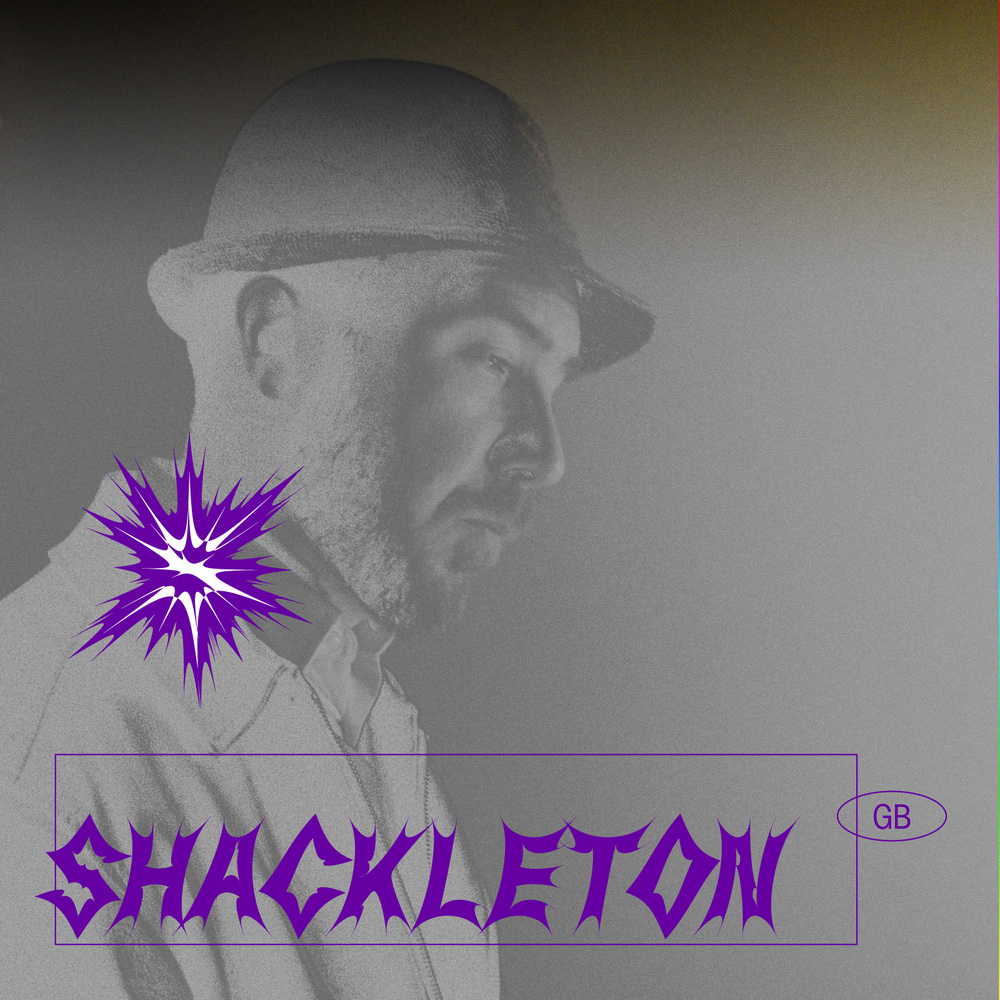
Shackleton is one of the most influential and uncompromising figures in exploratory bass music culture. From his pioneering Skull Disco imprint with Appleblim and the seminal Fabric mix, Shackleton has been zig-zagging in increasingly adventurous musical directions, using prolific output on Honest Jon’s and his own Woe To The Septic Heart! label to hone a musical lexicon that has his customarily subtle serialist motifs, dazzling rhythmic tessellations and irrefutably dread, post-industrial low-end scored through its DNA.
You can hear Shackleton perform his new album on Thursday, 30th of September in Kino Šiška.

Berlin-based James Ginzburg is a prolific musician of experimental electronic music, folk music, film and film score and dance music. He is one half of emptyset, a project which examines the material properties of sound and its correspondence with architecture, performance and physical modes of production; they have released on Raster Noton and Subtext, producing works for the David Roberts Art Foundation, Tate Britain and V&A Museum, and performing at Unsound, CTM, and Sonic Acts. He runs Multiverse, a publishing company and studio, which includes labels Subtext and Arc Light Editions.
You can see James on Friday, 1st of October performing his new album in Klub CD and talking at the conference in MAO on Wednesday, 29th of September.
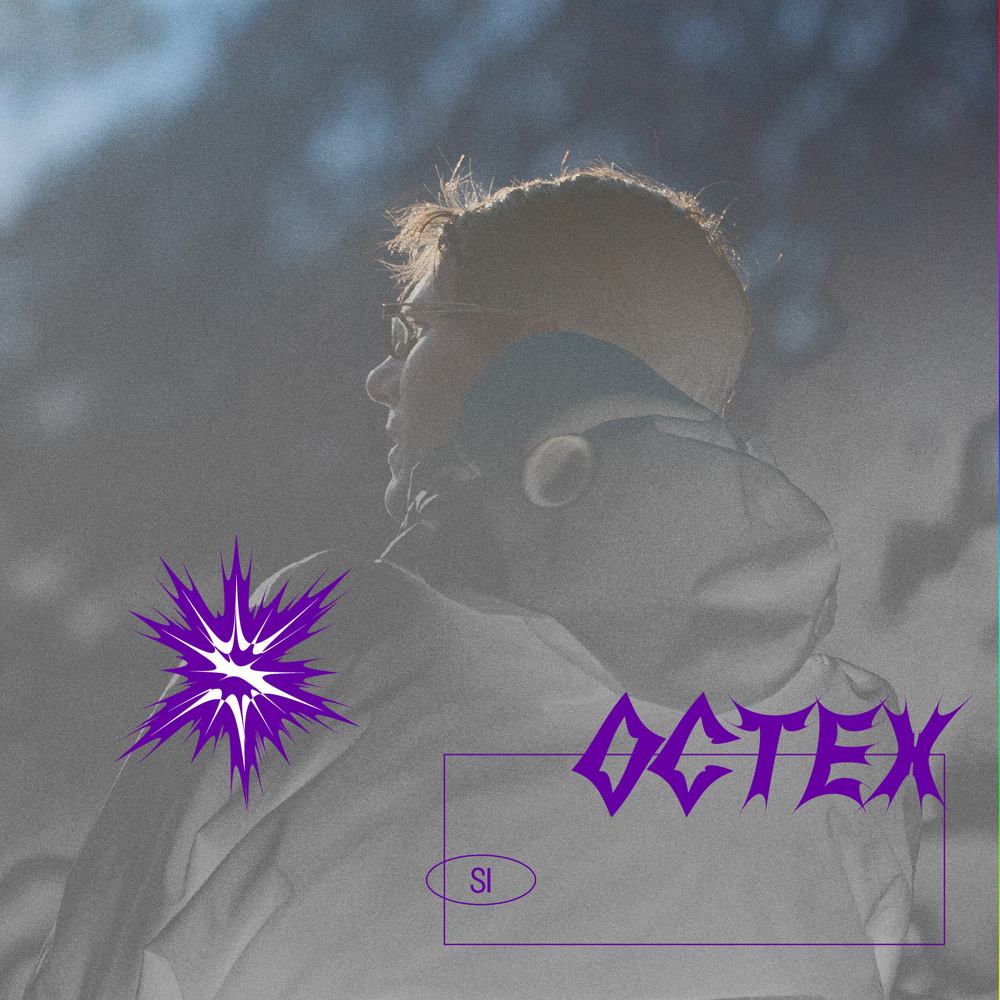
One of the fathers of the local electronic scene returns with a premiere of his new music! Octex, with his unique sound synthesis, marked international currents in the field of dub techno, which he later deconstructed and deepened through experimentation, modular synthesis, broken rhythms, field recordings and atmosphere building. On his comeback album Mindrifft (Polynya music, 2021), he goes a step further, taking us into a subtle play of frequencies and repetitions into the hypnotic fringe of sound perception, into pulsations and rhythmic shifts, into the loop of repetition and difference that forms in our auditory channels beyond the basic sonic matter. But these are not sonic eavesdropping. With them, alongside the sonically electrified bodies, Octex also takes us into the dance in our minds.
You can hear the premiere of new music from legendary Octex on Wednesday, 29th of September in MAO.
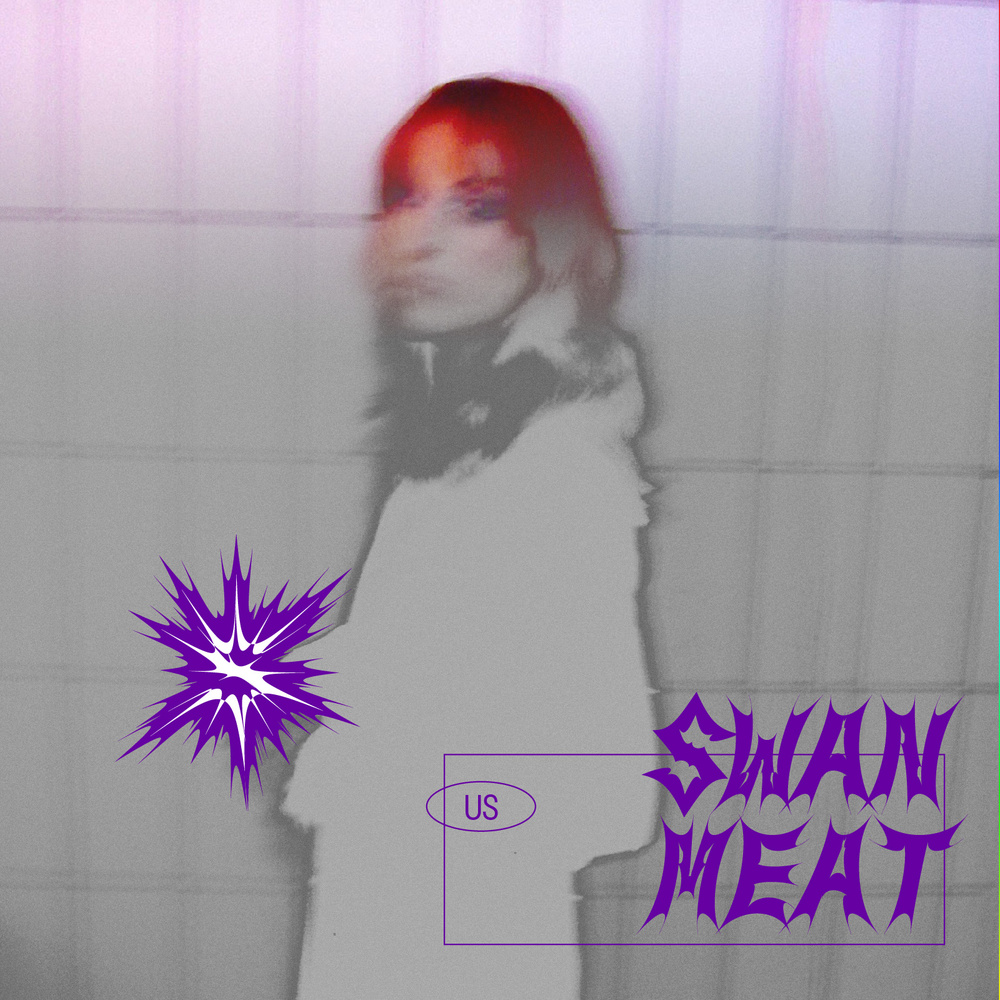
Swan Meat is a producer and DJ from Washington, D.C. based in Cologne. Since breaking onto the scene in 2017 with her EP BOUNTY, a tribute to classic Metroid games, she has carved out her own niche, perfecting a sound in which sweeping string arrangements, 8-bit synth melodies, and gigantic techno kicks meet in a weird and eerie whorl. She has since released myriad singles, remixes, and the EPs TAME, Knife Splits Ice, and FLESHWORLD. A resident DJ on London’s Rinse FM as well as one-half of the production duo House of Suns, she has proven herself versatile and ever-evolving.
You can see Swan Meat perform live with Sophie Hoyle in Kinoteka on Tuesday, 28th of September and dance to her DJ set on Wednesday, 29th of September in MAO.

Spatial is an electronic musician and multimedia artist from London whose work pushes the dynamics of sound system culture incorporating low frequency vibration, hacked code, and optisonic experiments. An unconventional artist in the turbulent realm of bass music, Spatial combines a preoccupation with emergent behaviour, rule based repetition and chaotic systems with an ability to shape dubbed out, cracked and reductive sonics into audible geometric form. Through textured intricate production, Spatial’s releases and live sets bring corporeal presence carved out with a minimalist’s scalpel.
You can experience Spatial’s tactical sounds on 30th of September in Kino Šiška.
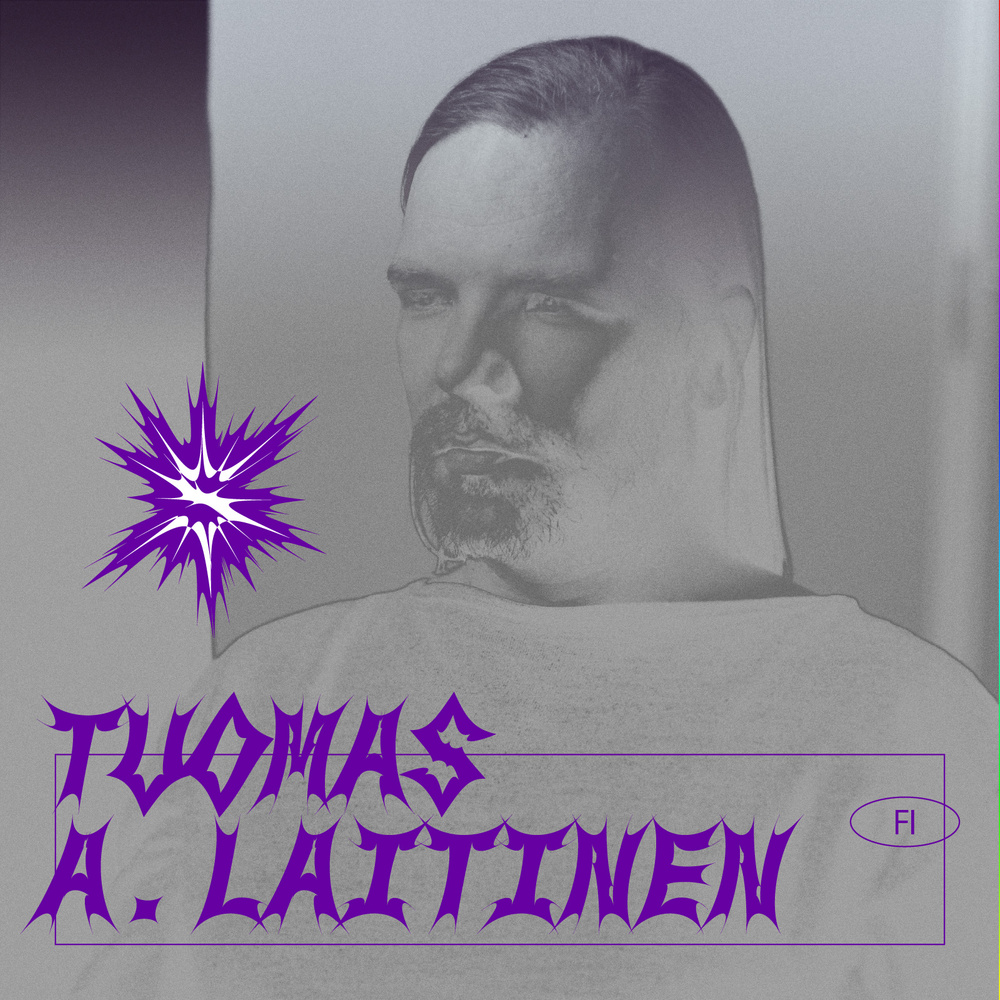
Tuomas A. Laitinen is an artist who works with video, sound, glass, chemical and microbial processes, and algorithms to explore the entanglements of multispecies coexistence. Laitinen composes situations and installations that inquire into the porous interconnectedness of language, body, and matter within morphing ecosystems. In recent years, Laitinen has been working with questions of ecology, mythology, and processes of symbiotic knowledge production. Since 2016, he has been researching cognition and consciousness in non-human organisms, especially octopuses. The video Haemocyanin (2019) follows an octopus as it plays with, investigates, and squeezes through one of Laitinen’s glass vessels. The video’s name derives from the types of proteins, which contain copper atoms that transport oxygen through the bodies of cephalopods, imbuing their blood with a bluish tinge.
You can see Tuomas’s artwork ‘Haemocianin’ on Monday, 27th of September in MSUM until the end of SONICA.
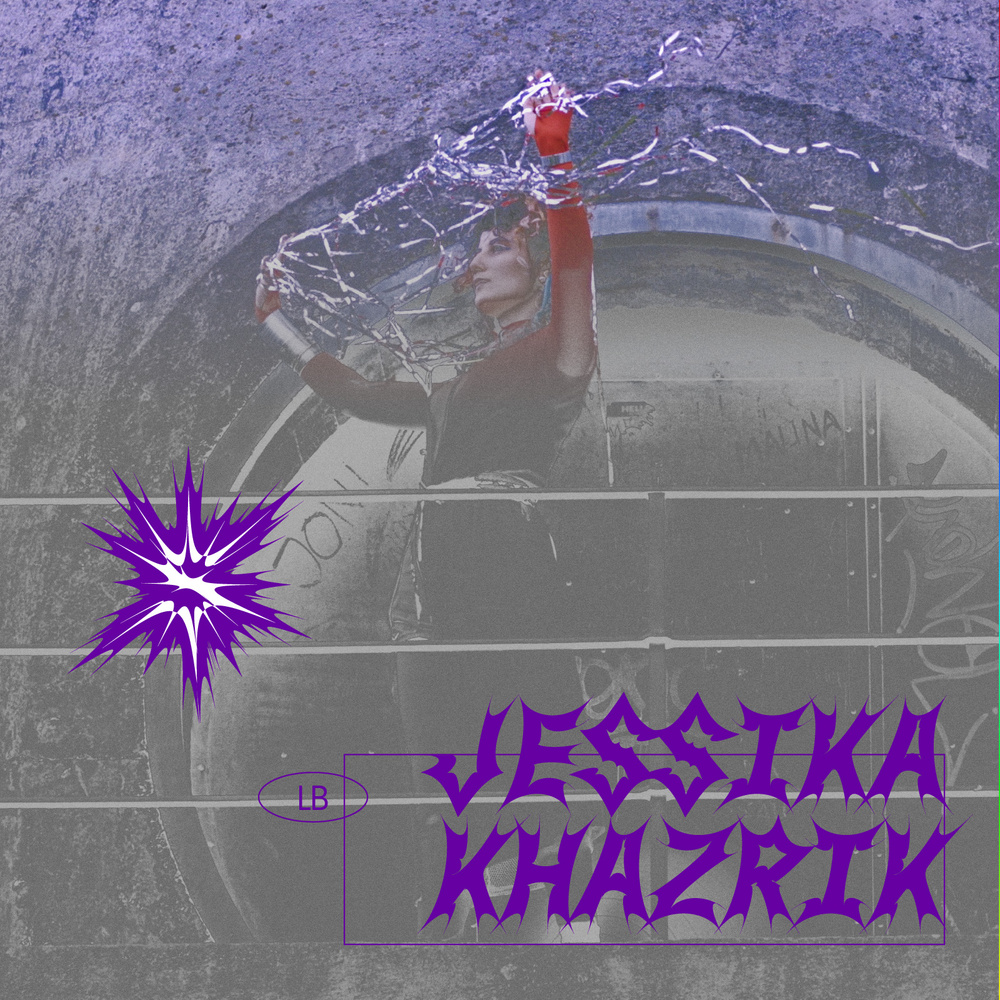
Jessika Khazrik (b. 1991, Beirut) is an artist, technologist, electronic music producer and writer whose interdisciplinary practice ranges from composition to machine learning, ecotoxicology, cryptography, performance, visual art and history of science. Her work has been presented at CTM Festival, the Arab Image Foundation, Kunsthalle Wien, the Museum of Modern Art Warsaw, Times Museum Guangzhou, LUMA Foundation, Haus der Kulturen der Welt, and Theater der Welt. Her writing has been published in Bidayat Journal, Zweikommasieben, Kohl Journal, The Funambulist, Almodon and Ibraaz.
You can see Jessika’s artwork at the exhibition in Gallery Equrna until 2nd of October and hear her new live set on Saturday, 2nd of October in Stara Elektrarna.
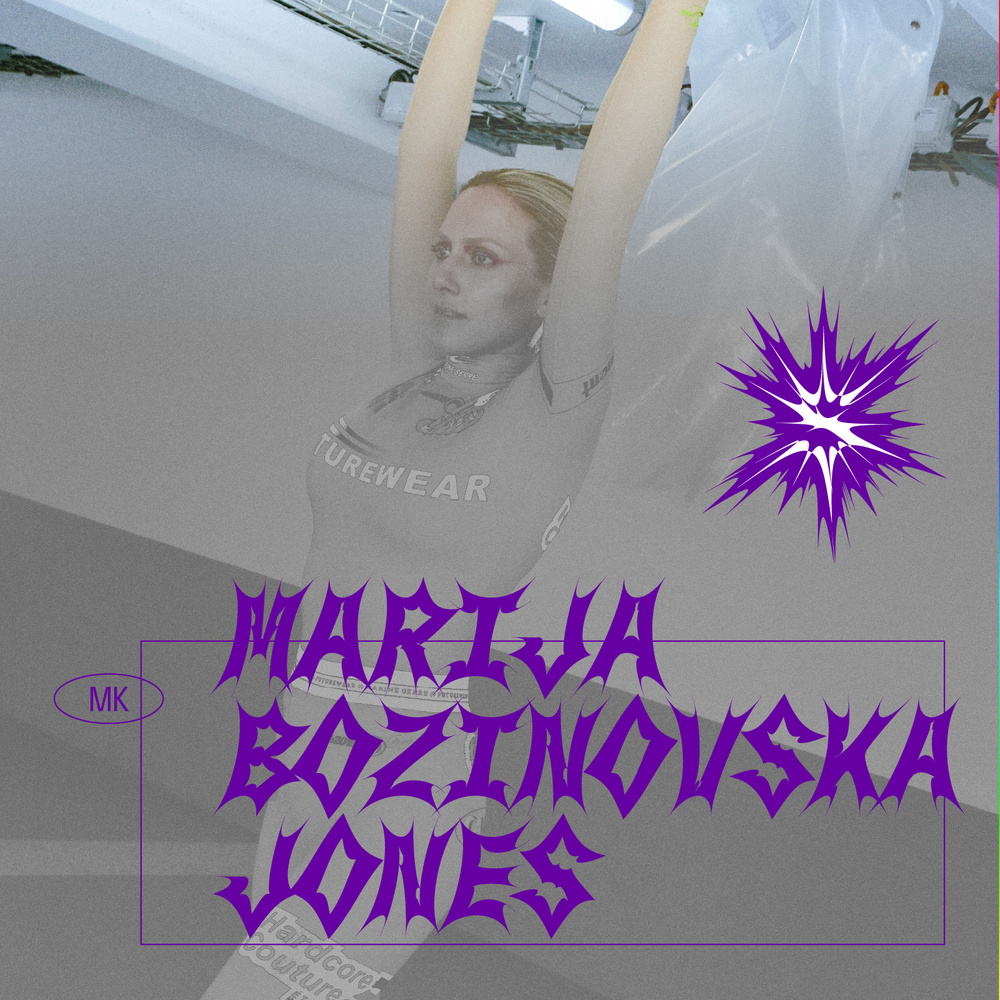
Marija Bozinovska Jones (MBJ Wetware) explores links between social, computational and organic architectures. Working across audiovisual formats, installation, ephemeral mediums and in live context, her works revolve around technological amplification and unpack cryptic ways of forging subjectivity. MBJ often maps biochemical onto algorithmic components, probing notions of selfhood from a subatomic level to networked presence on a planetary scale, regularly collaborating with researchers, programmers, holistic practitioners and other artists.
You can see Marija’s video artwork at the exhibition in Gallery Equrna until 2nd of October. She will DJ B2B with TUUM as MBJ Wetware after the concerts at Klub CD on the 1st of October.
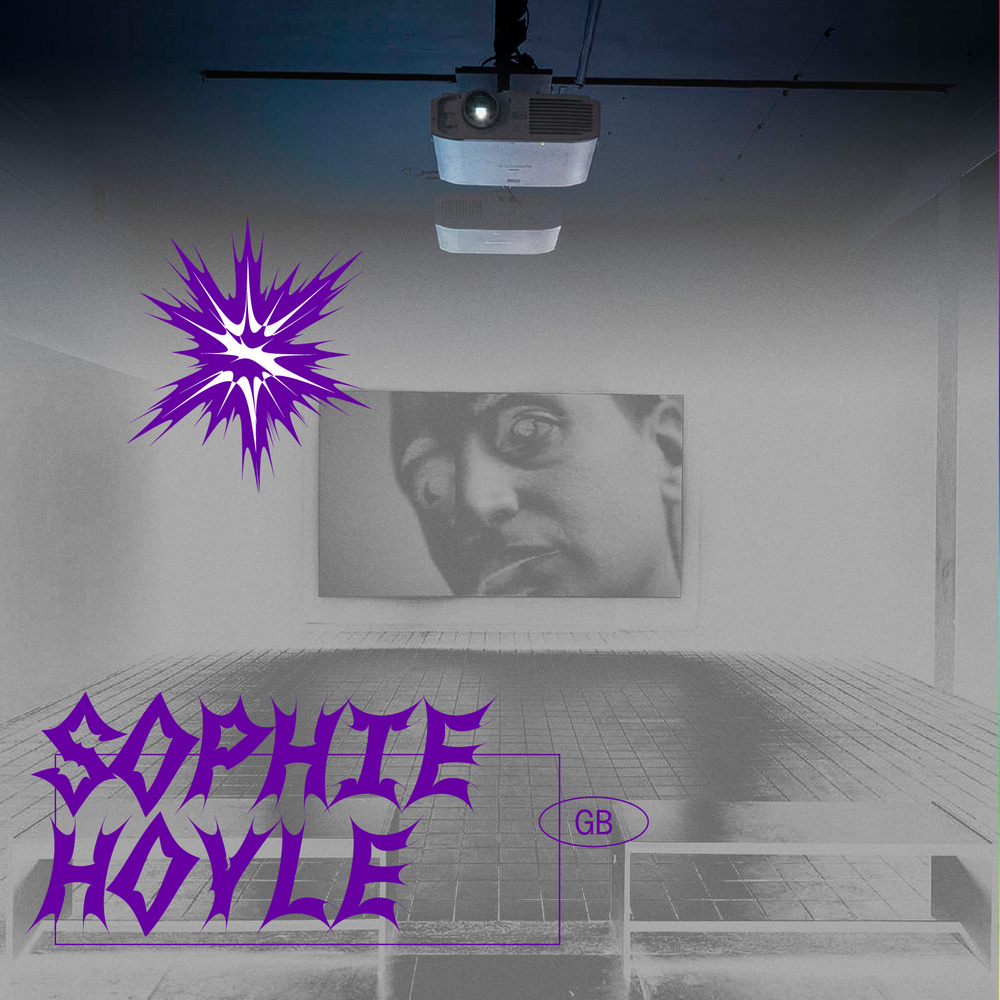
Sophie Hoyle‘s artistic practice takes an intersectional approach to post-colonial, queer, feminist, critical psychiatry and disability issues. Their work looks at individual and collective anxieties, aiming to form alliances between marginalized groups. They relate personal experiences of being queer, non-binary and part of the Middle East and North Africa diaspora to wider forms of structural violence. From lived experience of disability and mental illness including PTSD, they explore the history of biomedical technologies and treatments that overlap with state and military control.
You can see Sophie’s video artwork at the exhibition in Gallery Equrna until 2nd of October and her AV performance with Swan Meat on Tuesday, 28th of September in Slovenska kinoteka.
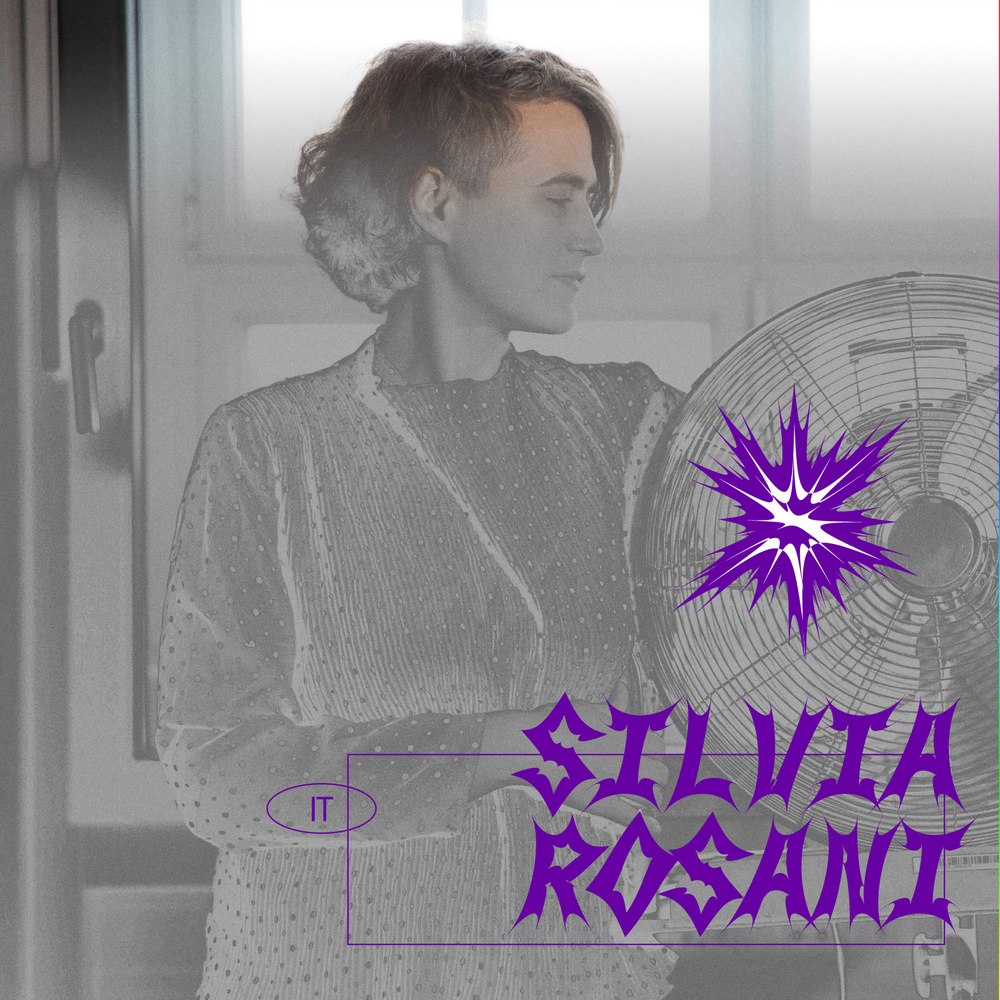
Silvia Rosini is an emerging composer and sound artist with a PhD in composition from Goldsmiths, who composes music in between contemporary music, electroacoustic music and installation. Invented sounds and objects, technology, objects, feedback loops, neural networks and databases enter into these relations between composer, performer and listener. Amotion, a work developed under the umbrella of the international EMAP/EMARE residency, through the relation between a musical instrument and a hybrid electroacoustic sound, interacts with the audience in a feedback loop, sounding and merging folk and other voices in a search for the in-betweens of emotional sediments in a shared sonic space. The work was presented at Ars Electronica in Linz, among other venues, and Rosini has also worked at ZKM Karlsruhe and the renowned SWR Eskperimentalstudio in Freiburg.
You can immerse yourself in Silvia’s interactive piece ‘Amotion’ on Friday, 1st of October in Klub CD
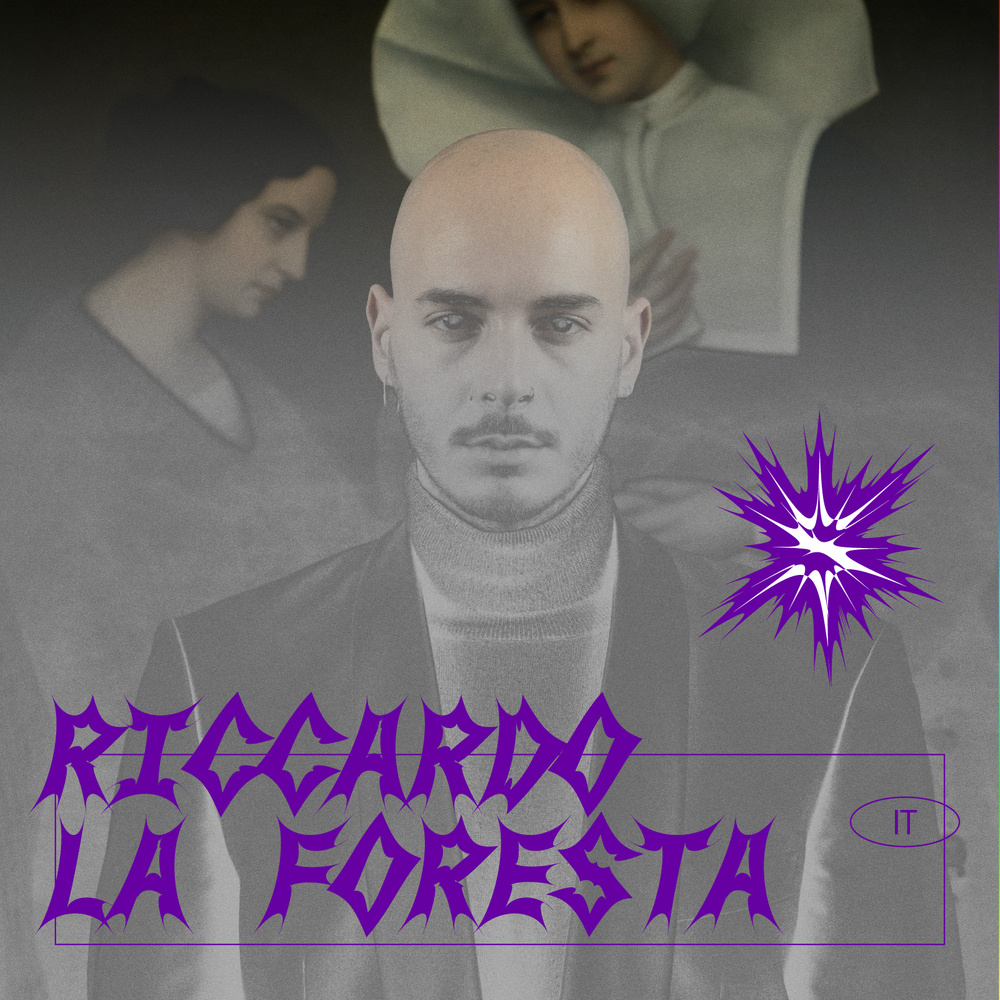
Italian drummer, percussionist, composer, improviser and sound artist Riccardo La Foresta is one of the most intensive researchers of deconstruction of sounds, rhythm and pulse in the context of contemporary classical music, experimental music, improvisation and sound art. In his music and sound installations, the deconstruction of the relations between musical instrument, object, body, action, surface, collision, contact, mechanics, breath and vibration resounds. His Drummophone is a cross between a membranophone and an aerophone, where breath replaces the impact, the mechanics of replace the hit of a stalk of air, where playing spills over into listening, and the relationship between drum and body melts into the resonance of space.
You can hear La Foresta’s amazing Drummophone set on Friday, 1st of October in Klub CD.
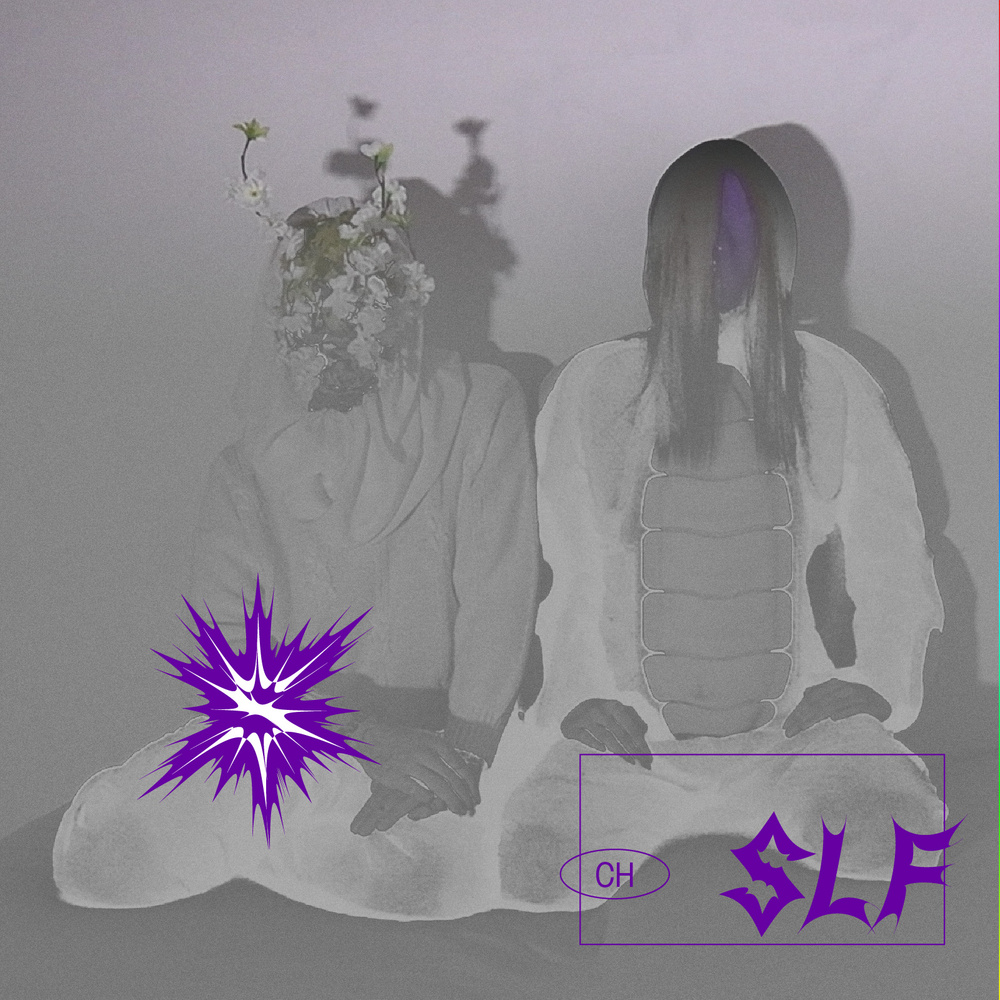
Spirit Liberation Front (SLF) is a mysterious, omniform artist collective helmed by Aïsha Devi. Their first official output is the cryptic film ‘The Sacred Show’ co-created with Swiss artist 118 a.k.a. Alec Ross and originally commissioned by Rewire Festival. SLF’s practice seeks to use the popular culture and language of the internet and upend it through injections of subliminal alchemical wisdom, flipping reality on its head.
You can see SLF’s video artwork ‘The Sacred Show’ at the exhibition in Gallery Equrna until 2nd of October and Aïsha’s performance on Saturday, 2nd of October in Stara Elektrarna.
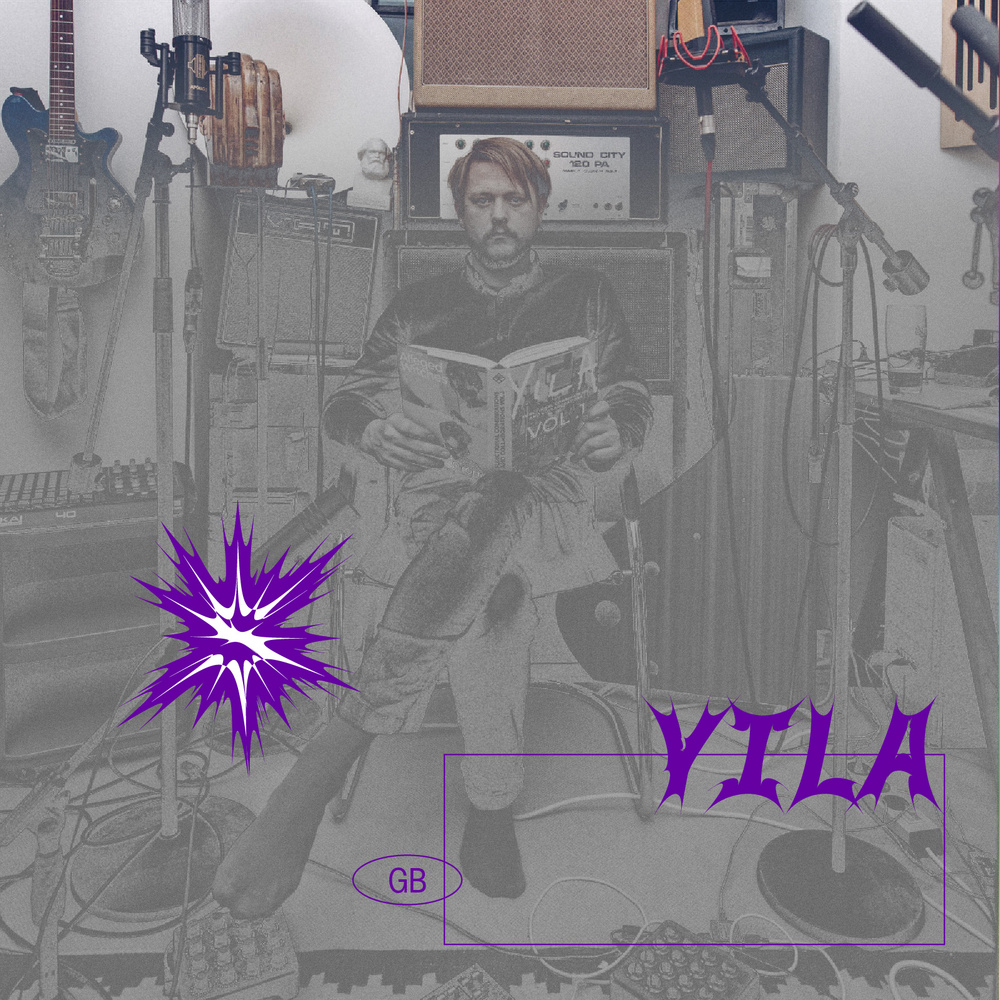
Yila is the name for a changing collaborative project lead by sound artist Alastair McNeill. A prolific experimenter, he keeps shifting his own musical boundaries from orchestral pop, electronica to techno and noise within this moniker.
Text about the performance …
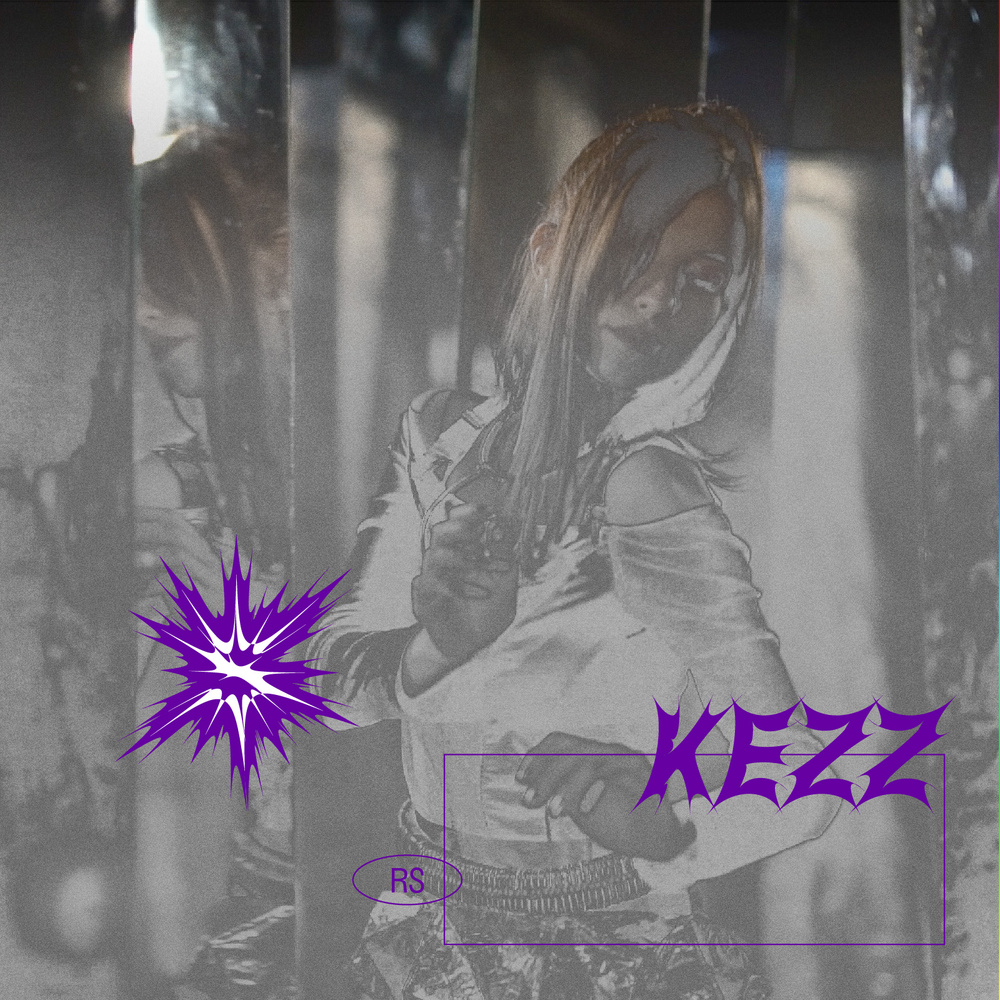
Tamara Ristić has been continuously releasing music under the pseudonym Kezz since 2014, and has been living and working in Ljubljana for the last few years. In addition to songs, she also creates music for theatre, films, performances and exhibitions. As Kezz, she creates a mix of electronic music, pop, dream pop with echoes of Balkan pathos and tradition. This year she released her album Svetla me miluju, and her live performances are a hybrid mix of live looping, DJing, singing and deconstructions of songs, taking us into a personal and yet topical space where dance electronics, dream pop, folk tradition and echoes of turbo pop and folk all reside together.
You can hear Kezz perform her hybrid set of electronic folk pop songs on Saturday, 2nd of October in Stara Elektrarna.
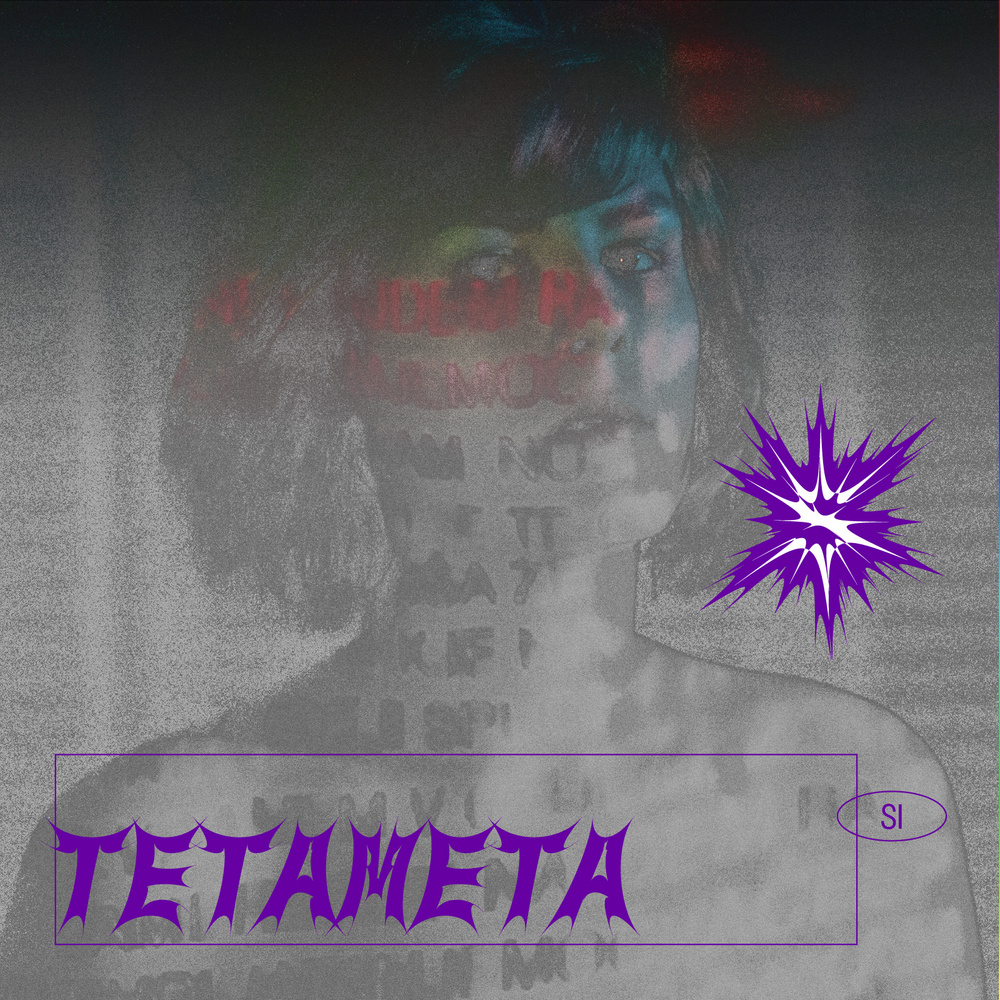
Tetameta is a project by Patricia Arh. Through it emerges an extremely intimate, emotional personal space, stretched through a veil of memory, nostalgia, sensual atmospherics and quietly sounding melancholy. Sandwiched between synthpop’s past and its modern reminiscence of synthwave and dream pop, it is permeated by translucent, airy electronics, in which the textures of multi-layered synthesiser chants sound, spaced out across the sonic canvas. This is often painted by the visuals of Neža Knez, underpinned by the creations of stylist Anže Mrak, the sound design of Petr Dimnik and the rhythms of drummer Žan Šembrek. Enter the embrace of dreaminess, which hides shades of darker emotions.
You can hear the subdued melancholic sounds of TetaMeta on Wednesday, 29th of September in MAO.
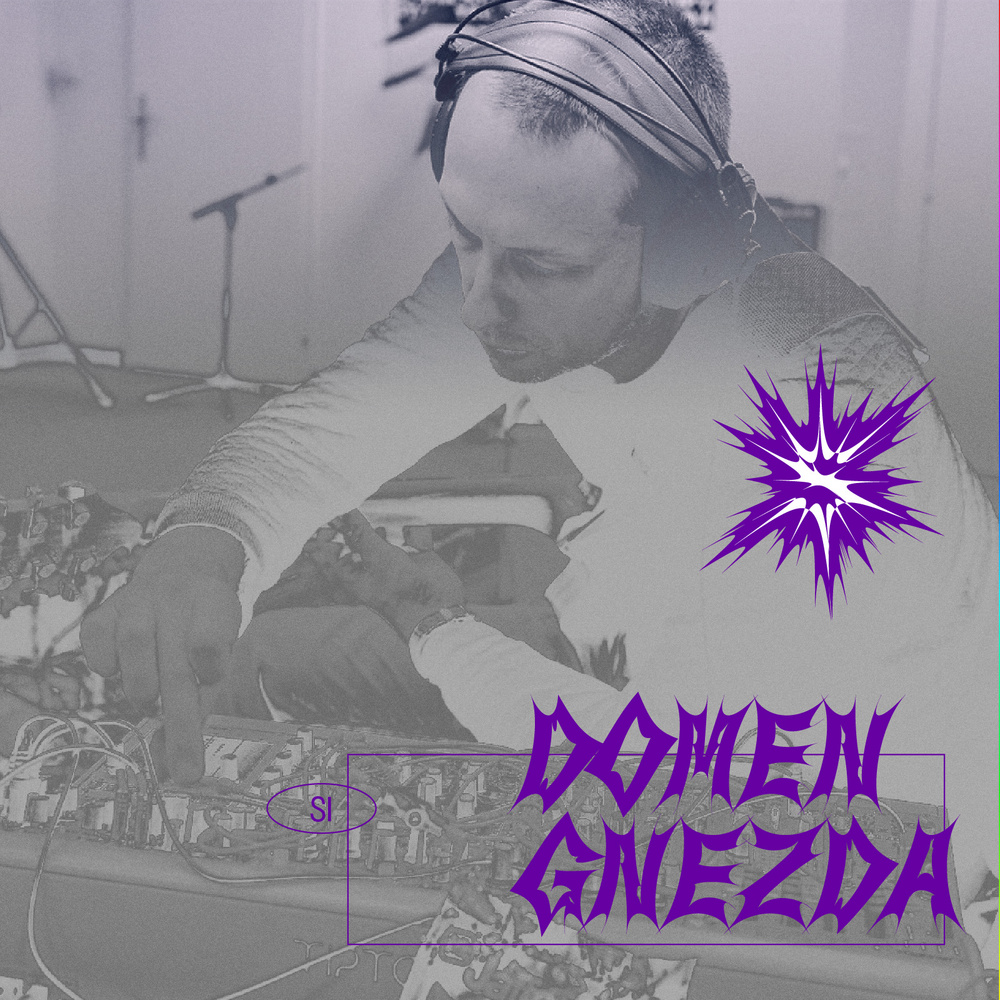
Domen Gnezda is one of the most versatile guitarists in the country, working at the crossroads of jazz, blues, experimental and electroacoustic music, improvisation and contemporary classical. He stretches his string sounds into intense interstices between dissonance and cosonance, between electric guitar sound and synthetic modulation, stretching, shredding, lengthening, overlapping, layering, fragmenting, texturalising, and introducing them into bouncing glitches. Nest’s music thus straddles the line between physicality, corporeality of sound, and transcending it, while sounding like a superb and singular hybrid between electronic music, IDM, song form, and openness with quiet reminiscences of jazz and blues.
You can hear Domen performing his gitchy mixture of guitar and electronic sounds on Thursday, 30th of September in Kino Šiška.
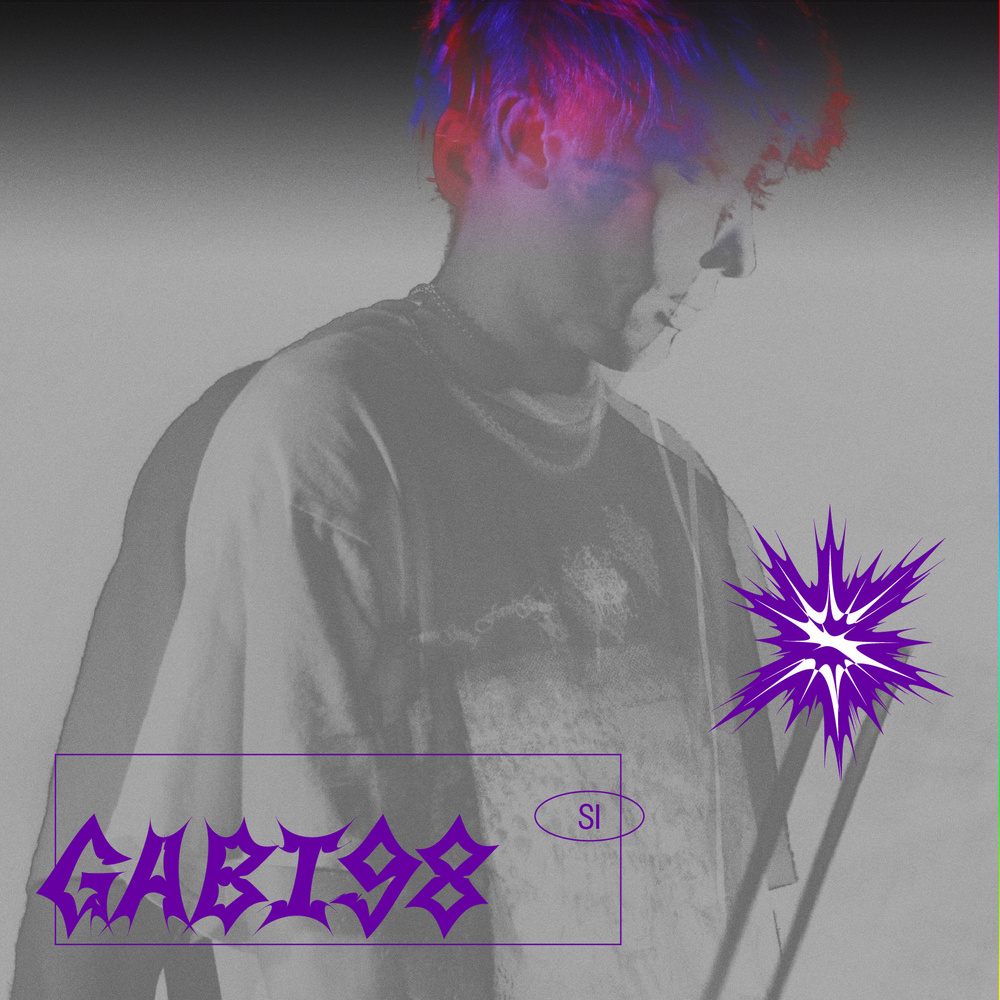
Gabriele Steffe is a young artist, a representative of the younger generation of artists and collectives that are intensively redefining the Ljubljana underground club scene. He is mainly involved in club music and curating. He is the founder of the creative collective Nimaš izbire (You Have No Choice) and the club nights Krom and Štrom. As a DJ, his sets eclectically mix various derivatives of trap, cloud rap, ambient music, hyperpop, online audiovisual culture and post-internet rave. He is currently at home with deconstructed club electronica, cloud rap derivatives, sarcastic pop and post-internet rave. With dreamy, percussive, danceable, sarcastic, poppy, swollen hyperaesthetics he will make you dance between physical and virtual space.
You can dance to GABI98’s exploratory DJ set on Wednesday, 29th of September in MAO.
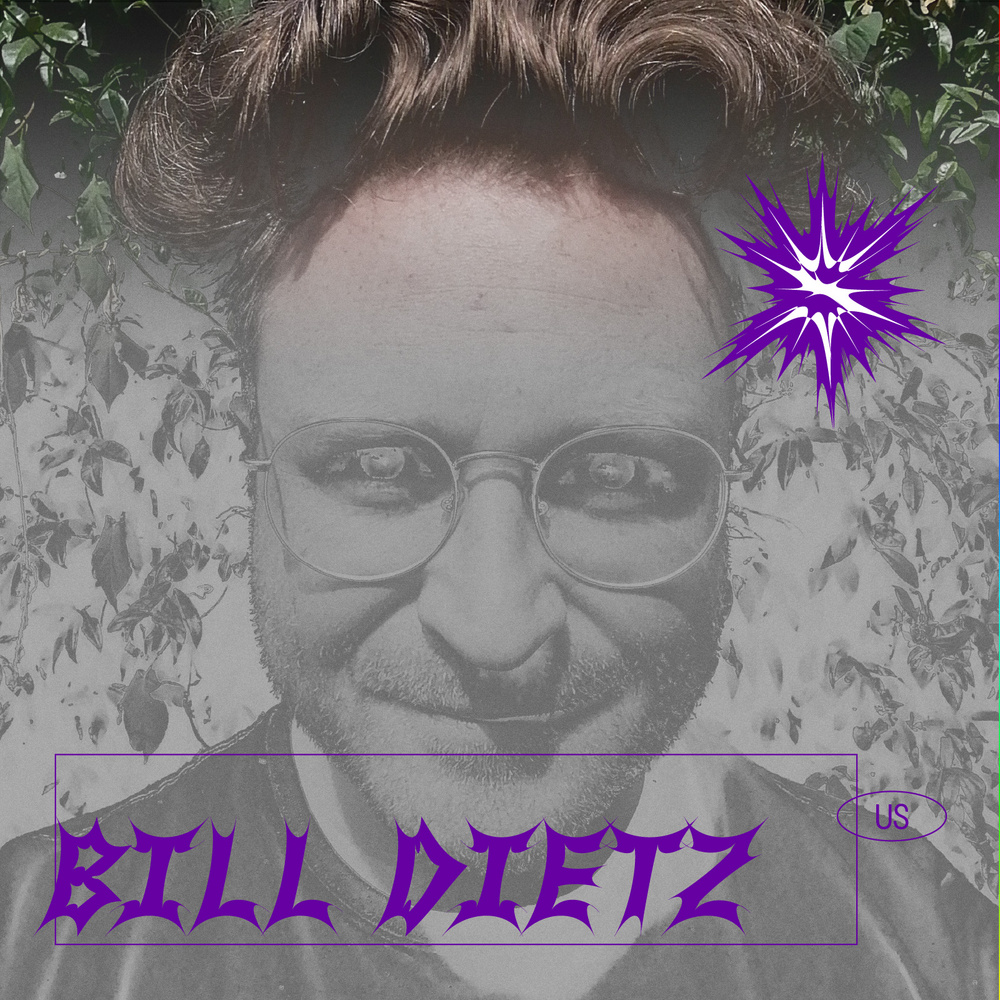
Bill Dietz is an American composer, writer, & co-chair of the Bard MFASound Department who is currently based in Florence. His work on the genealogy of the concert and the performance of listening has brought him to festivals such as MaerzMusik & the Donaueschinger Musiktage, museums such as the Hamburger Bahnhof, the Brooklyn Museum, and the Stedelijk Museum, and into publications such as MusikTexte and Positionen. He has worked regularly with Catherine Christer Hennix and Maryanne Amacher. He is the artistic director ofEnsemble Zwischentöneand co-founder of Ear / Wave / Event.
You can hear Bill’s presentation of Maryanne Amacher’s work and unreleased recordings on Wednesday, 29th of September in MAO.
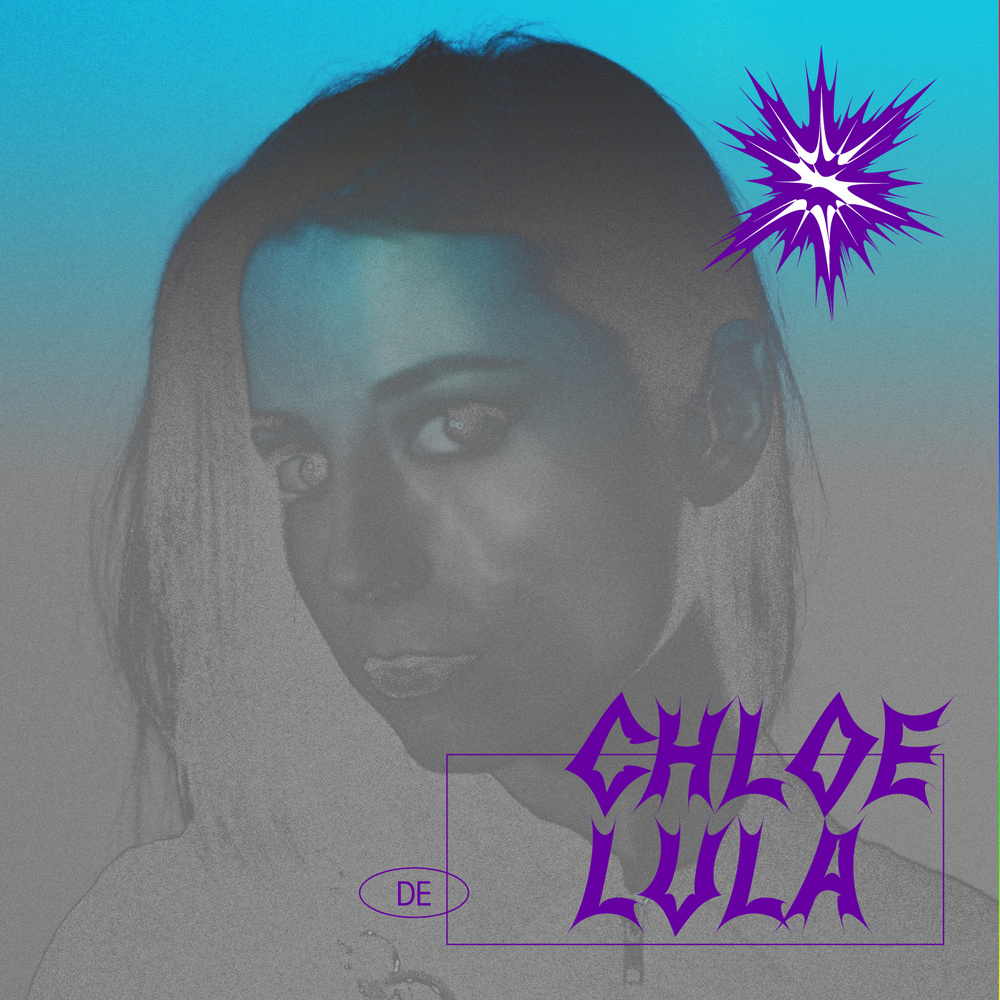
Chloe Lula is a Berlin-based DJ, music producer, and writer. She is the Managing Editor of Resident Advisor, the Editorial Director of Refuge Worldwide Radio, and a journalist with bylines in the New York Times, the Washington Post, Politico, Esquire, and The Wire, among other major publications. She has an MA in art and cultural criticism from Columbia Journalism School in 2020 and is a fellow with the Pulitzer Center in Washington, D.C. In addition to covering about music and culture, Chloe writes about gender justice, LGBTQ+ rights, intersectional feminist theory, migration and mutual aid.
You can hear Chloe speak as part of a panel on music business as well as conduct an artist interview on Wednesday, 29th of September in MAO.
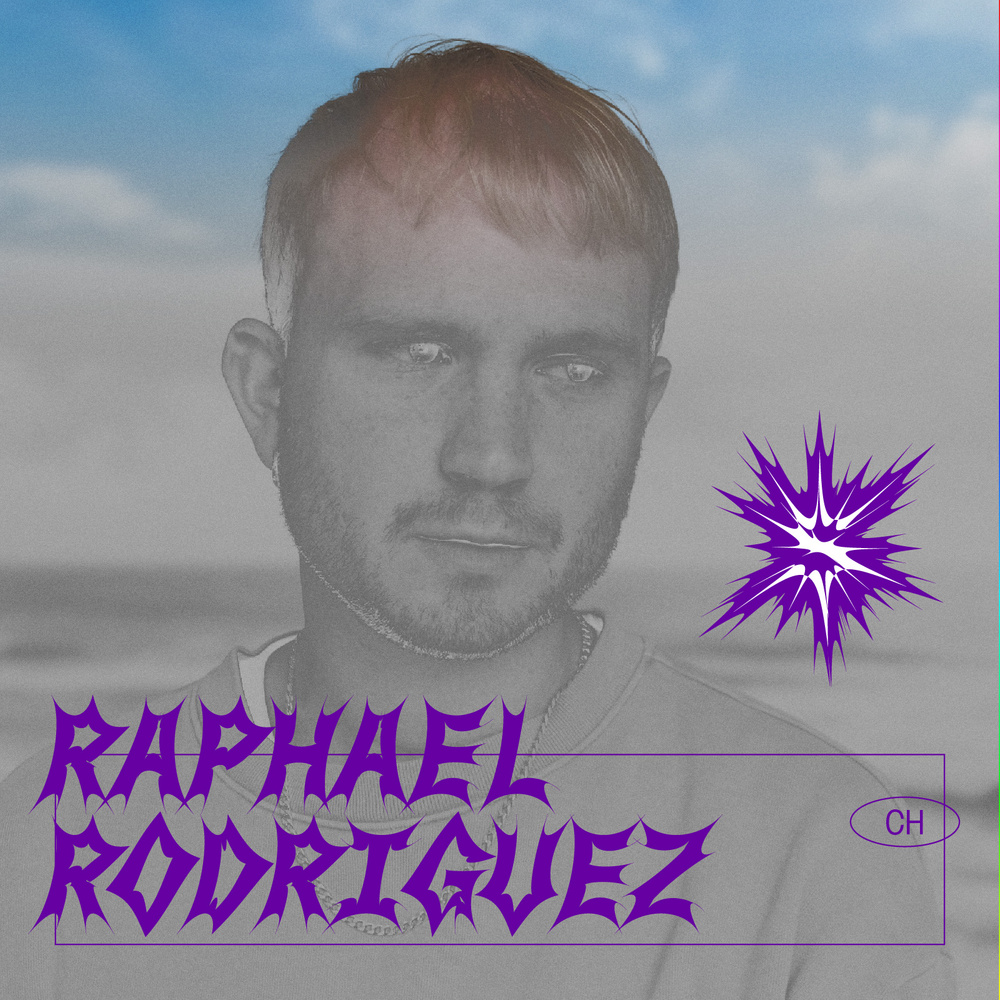
Raphael Rodriguez has been active in the fields of music & art for a decade, with a career spanning from tour management/booking and production to artist management worldwide. Initially from Switzerland and currently operating out of Berlin, he co-founded and runs the Danse Noire label and currently is active as an A&R consultant as well as the label manager of boundary-breaking interdisciplinary outlet PAN.
You can hear Raphael speaking about music business at MAO on Wednesday, 29th of September.
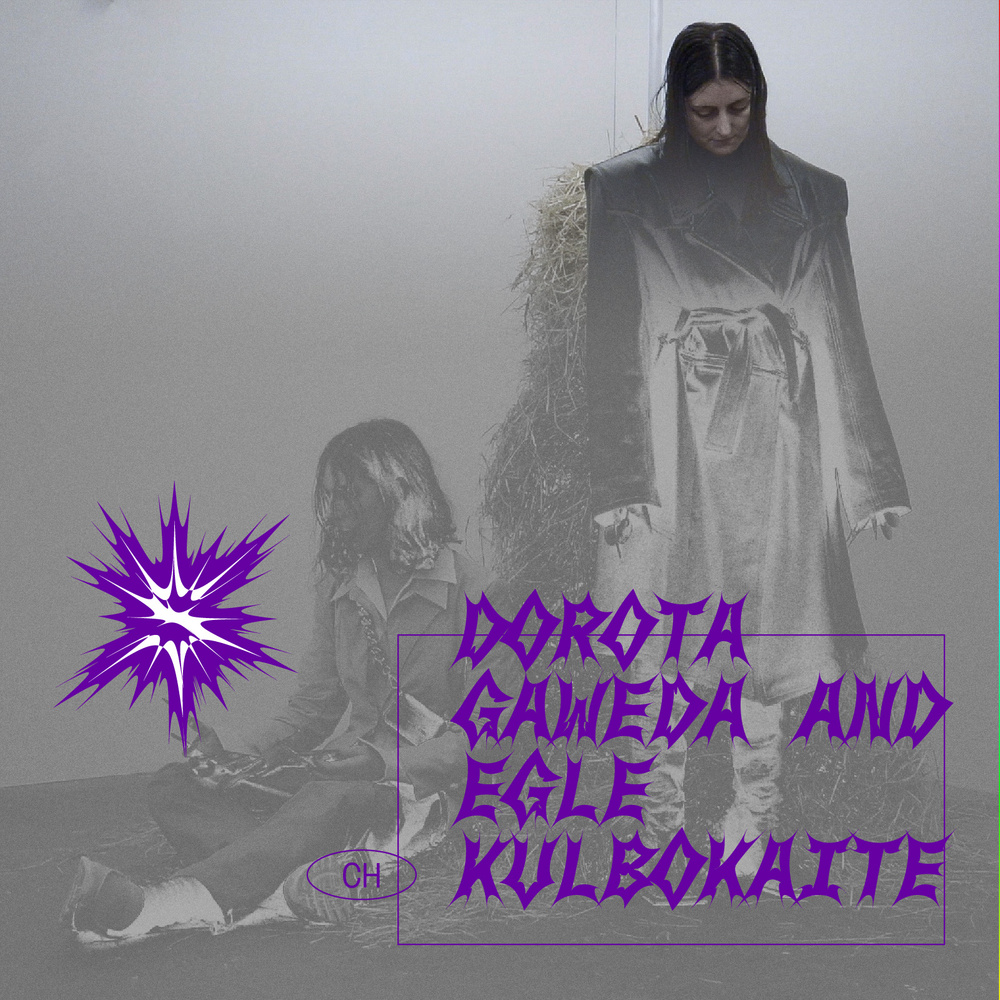
Dorota Gawęda (PL) and Eglė Kulbokaitė (LT) are an artist duo based in Basel (CH). Both are 2012 graduates of the Royal College of Art in London. Their work spans performance, installation, fragrance, sculpture, drawing, photography and video. They are the founders of YOUNG GIRL READING GROUP (2013–) and co-initiators of its online archive. Gawęda and Kulbokaitė are among the finalists of the Swiss Art Awards 2021. The duo are represented by Amanda Wilkinson Gallery in London and Lucas Hirsch Gallery in Düsseldorf.
You can see Dorota and Eglė’s video artwork at the exhibition in Gallery Equrna until 2nd of October.
OFLUXO is proudly powered by WordPress
